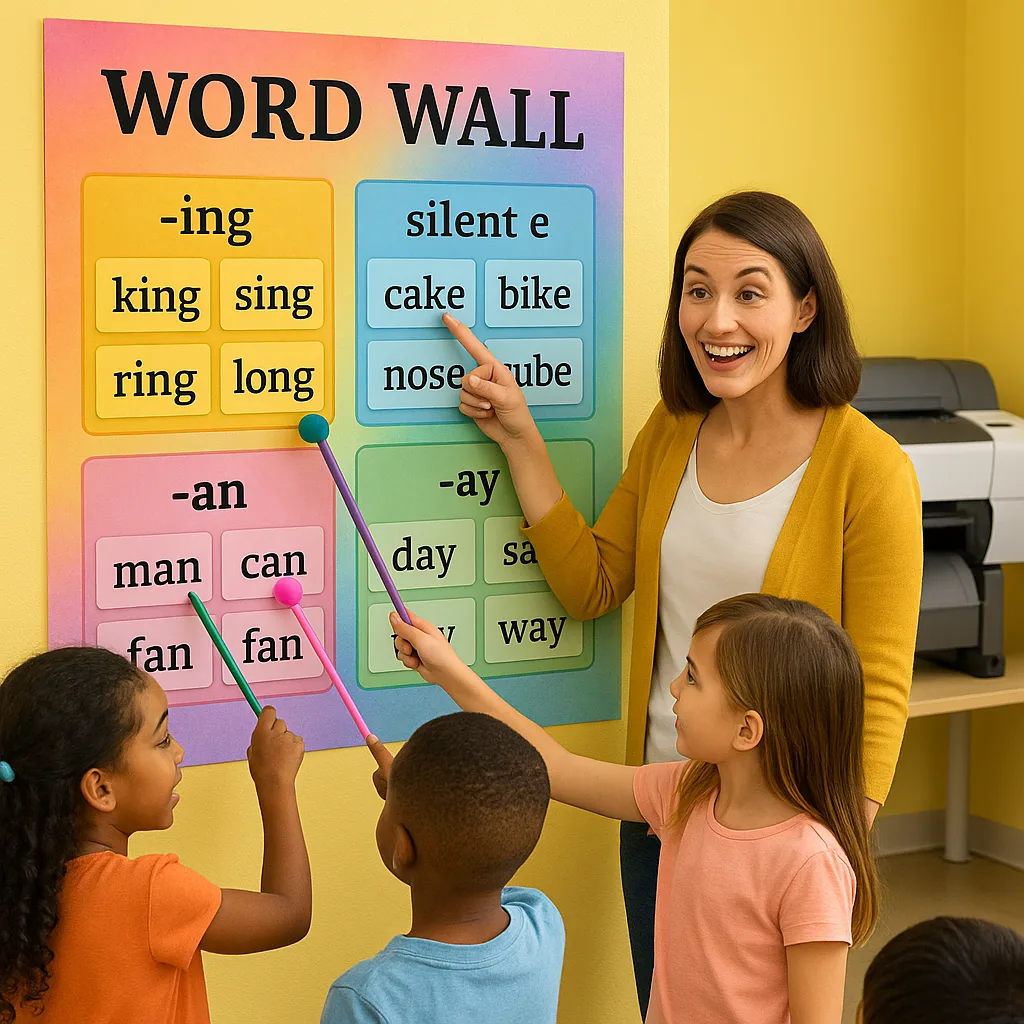School Poster Maker Word Walls That Boost Reading
School Poster Maker Word Walls: A Game-Changer for Struggling Readers
When I started teaching this year, my mentor teacher introduced me to the magic of interactive word walls. However, what really revolutionized my approach was discovering how banner printing machines could help me create professional-looking displays that my students actually wanted to interact with. The difference between handwritten cards and vibrant, printed word walls has been remarkable – my struggling readers are now excited about vocabulary work!
Research shows that visual vocabulary displays can increase word retention by up to 40% when students actively engage with them. That’s why I’ve invested so much time in creating word walls that aren’t just decorative but truly interactive learning tools. With our Campus Pro 36 Poster Maker Advanced Package, I can print large, colorful word cards that are durable enough for daily handling.
Creating Visual Context Clues with School Poster Maker Word Walls
Visual context clues are essential for struggling readers, and this is where having access to quality printing equipment truly shines. With our banner printing machines, I create word cards that include small illustrations or symbols alongside the text. These visual anchors help students remember word meanings even when they struggle with decoding.
For instance, when teaching the word “migrate,” I include a small image of birds flying south. The word “community” features tiny figures holding hands. These visuals aren’t just decorative – they’re memory aids that support comprehension. I’ve noticed my ELL students particularly benefit from these visual-verbal connections.
Another technique I love is creating “word webs” on large posters. Using the Amplify Poster Maker, I can print beautiful concept maps that show relationships between words. For example, a central word like “happy” connects to synonyms, antonyms, and related phrases, all with connecting lines and color coding that makes the relationships clear.
Interactive Activities That Bring Word Walls to Life
Static displays don’t support struggling readers effectively. That’s why I’ve developed numerous interactive activities that encourage students to physically engage with our word walls. Every morning, we play “Word Wall Warm-Up” where students use pointers to find words that match specific criteria – words with three syllables, words that rhyme with “cat,” or words containing the /ch/ sound.
I’ve also created moveable word cards using our banner printing machines that students can manipulate during center time. They sort words into categories, build sentences, or play matching games. The durability of professionally printed materials means these cards withstand daily handling by enthusiastic six and seven-year-olds.
One particularly successful activity is our “Word Wall Detective” game. I provide clues about a mystery word, and students race to find it on our display. This not only reinforces vocabulary but also builds important scanning and location skills that transfer to reading comprehension.
Measuring Success: Assessment Strategies for Word Wall Learning
Creating beautiful word walls is only part of the equation – we need to ensure they’re actually improving reading comprehension. I’ve developed several assessment strategies that help me track which students are benefiting from our displays and which need additional support.
Weekly word wall assessments don’t need to be formal tests. I use quick activities like “Word Wall BINGO” where students mark off words as I give definitions or use them in sentences. This game-like approach reduces test anxiety while still providing valuable data about vocabulary retention.
I also maintain individual word wall folders where students collect personal copies of words they’ve mastered. Using our school poster maker, I print smaller versions of our word cards that students can keep in their folders. When a student can read, spell, and use a word correctly in context three times, they earn the right to add it to their personal collection.
Progress monitoring has shown that students using interactive word walls consistently outperform those in traditional vocabulary programs. My struggling readers have shown an average of 30% improvement in sight word recognition and a 25% increase in reading fluency scores since implementing these strategies.
Looking Ahead: The Future of Interactive Word Walls
As I continue to refine my approach to word walls, I’m excited about incorporating more technology and interactive elements. QR codes linking to pronunciation guides, augmented reality features, and digital extensions are all possibilities I’m exploring. The foundation, though, remains the same: high-quality, visually appealing displays that engage struggling readers.
Our school’s investment in proper printing equipment has made all the difference. Instead of spending my weekends hand-creating materials, I can focus on designing effective learning experiences. The Amplify Poster Maker has become an essential tool in my teaching toolkit, allowing me to respond quickly to student needs and create customized materials.
If you’re considering upgrading your word wall game, I encourage you to explore the possibilities that professional printing equipment offers. The time saved and the quality achieved make it a worthwhile investment in your students’ literacy development. Check out our guide on funding sources to make this technology accessible for your classroom.
Remember, the goal isn’t perfection – it’s progress. Every interactive element you add, every thoughtful organization choice you make, and every moment students spend engaging with your word walls contributes to their reading success. Start where you are, use what you have, and watch your struggling readers transform into confident word explorers!


